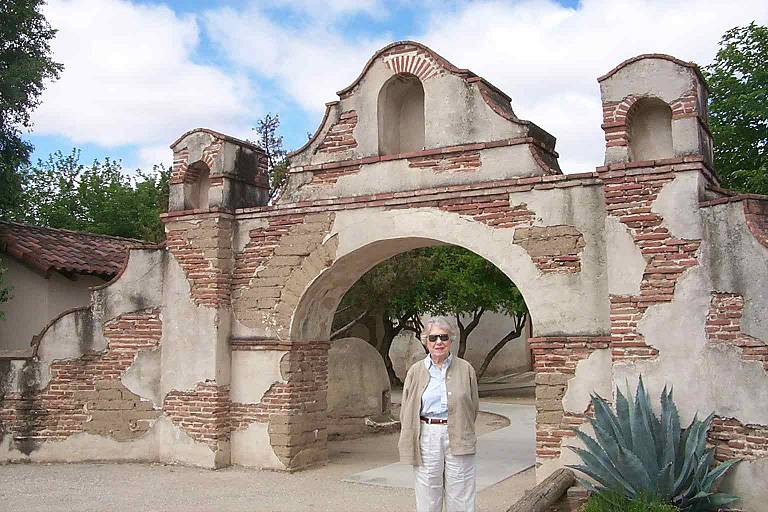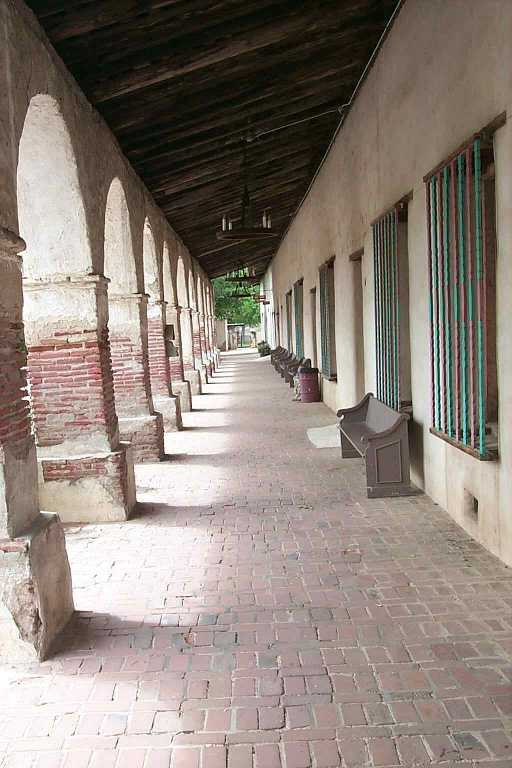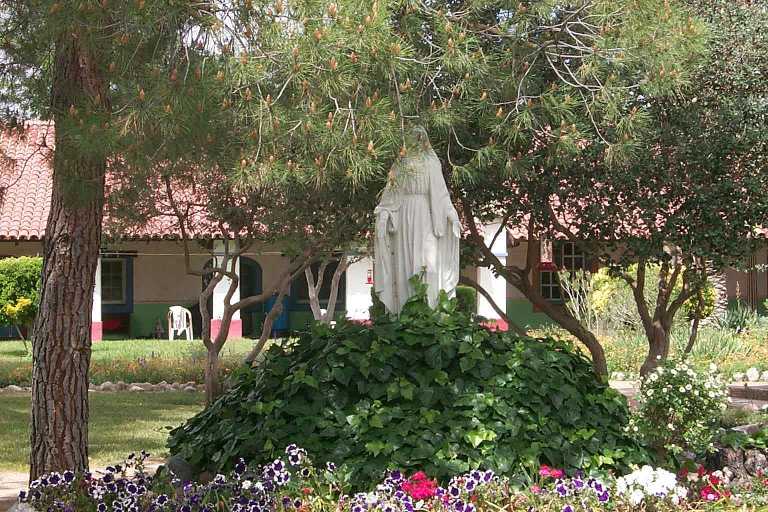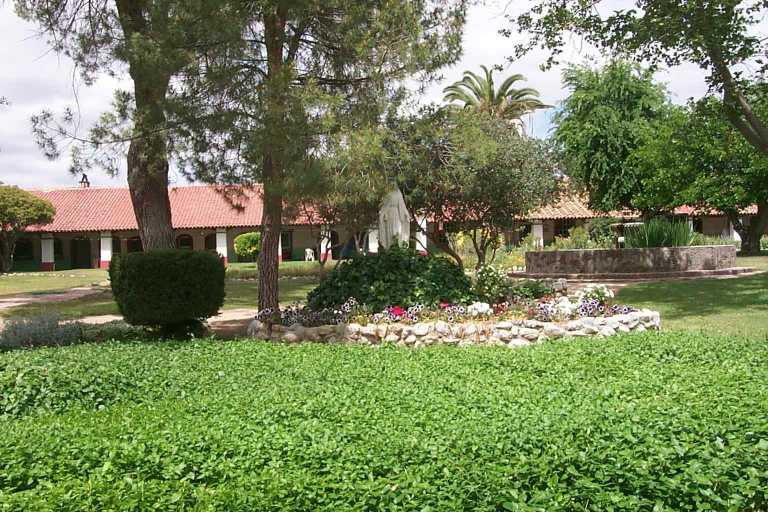Mission San Miguel was the sixteenth mission built in the Spanish California Mission System. The mission was founded July 25, 1797 and is located just north of San Luis Obispo, California along busy interstate 101 some 150 miles south of San Jose. As you may know the California Missions were built in Alta California between San Diego and Sonoma roughly along the present route of Highway 101. The purpose of the missions was to create a network of outposts where travelers, who were either walking or riding horseback, could easily move from one mission to the next in one day, because of this they were spaced approximately 20 miles apart. San Miguel was to fill the link between San Luis Obispo and San Antonio Mission.
There is still much controversy about the true overall purpose of the mission system as well as the methods used in accomplishing that end. Most historians agree the system was a means of providing support to the Spanish colonizing efforts which in the beginning consisted almost entirely of mining for precious metals. The missions raised food and provided a somewhat safe sanctuary for the various colonies. Of course the next stated reason was to civilize the Indians and make Christians of them. I feel all of the Priests that were responsible for this task were sincere in wanting to make converts of the neophytes, what I would question is some of the methods used in this effort. A new and somewhat common phrase used these days to describe this method is "tough love".

Above is the front entrance to the mission. What you see in the photograph is not what the mission looked like when it was built. In 1834 all of the missions in California were secularized or taken away from the Catholic church and sold or simply abandoned. During a period after the secularization most of the churches fell into terrible disrepair many were vandalized and some were severely damaged by fire and earthquake. After California became a part of the United States and a State of the Union, many of the churches or missions were returned to the priesthood, and many are still used as parishes to this day with regular church activities, others have been declared State Historical Monuments. But all that are still in existence have had major restoration projects preformed on them, some look nothing like they did when originally built, others have been restored to look somewhat as they did when built. San Miguel is one that has undergone major changes.

This photo of Josephine was taken in May of 2000 when we were on our way home from visiting Mike and his family.

The statue is of Father Junipero Serra, president of the California Mission system when it first came into existence. Thought by the time Mission San Miguel was built father Serra was dead and did not live to see many of the later missions finished. Father Lasuen was president of the California Mission System at the time San Miguel was built. In 1795 at the urging of the Church Governor Diego Borica ordered an expedition of soldiers sent from Monterey to find a suitable place to build a mission between Mission San Luis Obispo and San Antonio, the party was accompanied by Father Buenaventure Sitjar from Mission San Antonio. The site was found and the Church was built. Father Sitjar and Father Antonio de la Conception Horra were installed as san Miguel's first missionaries. The Mission was not in existence for that long a time before the secularization but it did gain some success while it lasted. The Church is presently used as a parish church and as a State Historical Society Site.

Front portico.

Some of the grounds with a statue of St. Mary.

More grounds.

Altar.

Front patio area.
 Born 08/13/1925
Born 08/13/1925